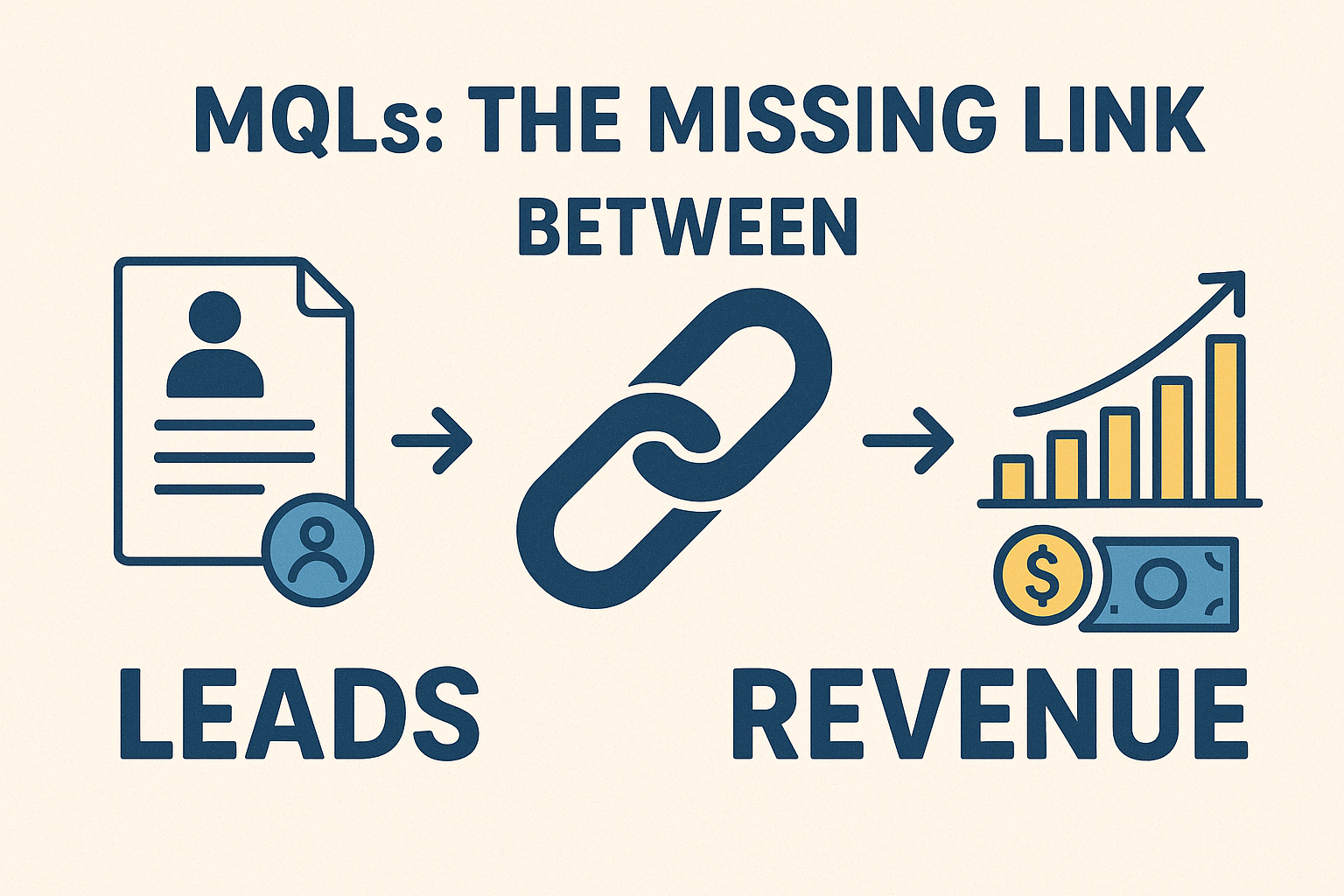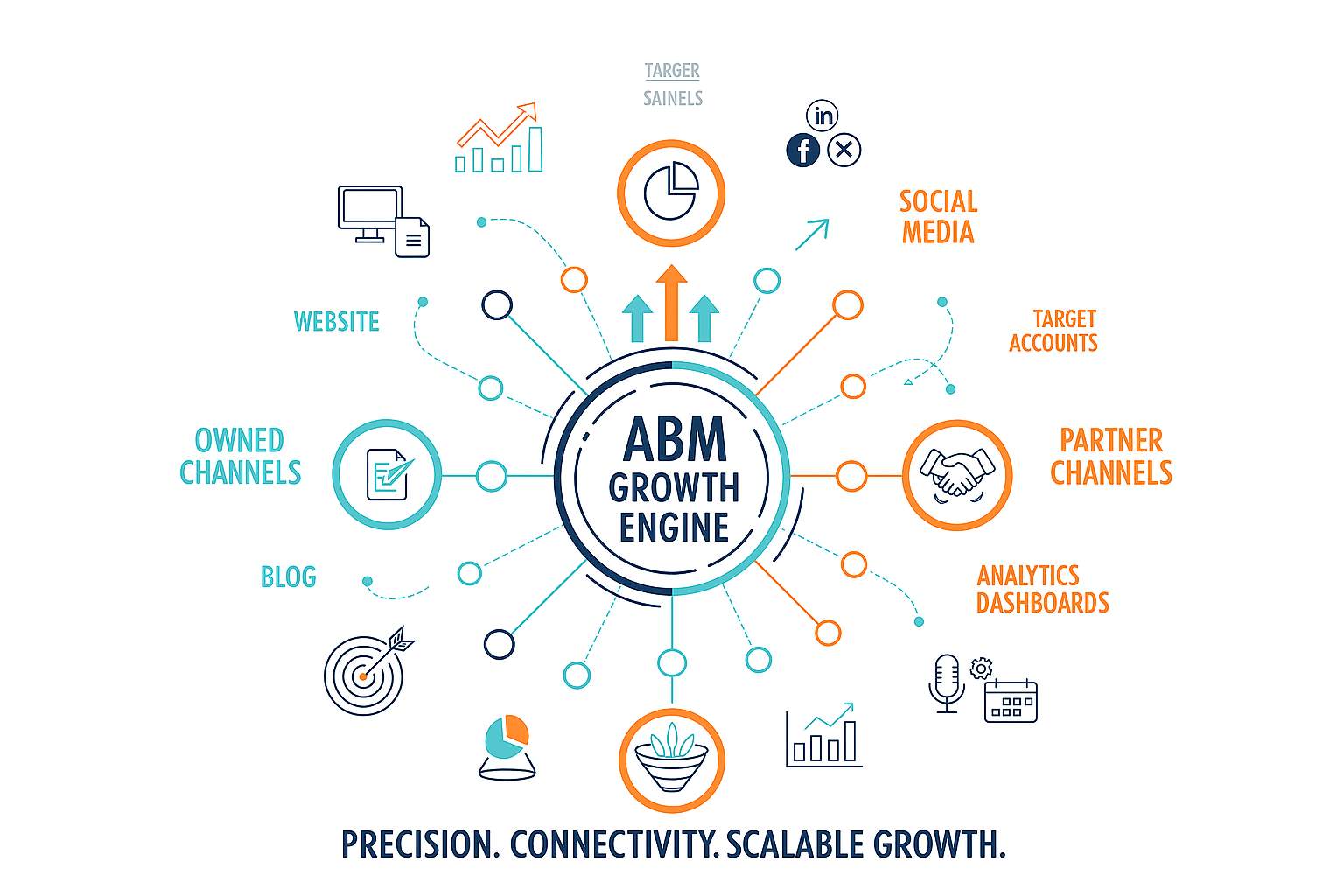A strong online presence through a B2B website is essential for businesses to thrive in the digital age, especially for B2B (business-to-business) companies. The sales cycle in B2B markets is typically longer and more complex than in B2C (business-to-consumer) markets.
Unlike B2C transactions, which often involve quick decision-making, B2B purchases require extensive research, multiple stakeholder approvals, and a thorough evaluation of potential vendors. Therefore, having a robust SEO strategy for your B2B website is important.
An optimized B2B website can significantly enhance your company’s visibility on Google, making it easier for potential clients to find you. This visibility is crucial because B2B buyers frequently begin their purchase journey with online research. If your website appears at the top of search results, it positions your business as a credible and authoritative source in your industry.
Effective SEO can drive high-quality leads to your website. These leads actively search for the solutions or products you offer, increasing the likelihood of conversion. Over time, consistent SEO efforts can improve your website’s ranking, attract more traffic, and ultimately contribute to your business’s bottom line.
In this blog post, we will explore nine crucial SEO best practices specifically tailored for B2B websites, ensuring your digital presence is both strong and strategically sound.
Table of Contents
ToggleWhat is B2B SEO?
B2B SEO (Search Engine Optimization) refers to the specialized process of optimizing a business website to enhance its visibility and ranking on search engine results pages (SERPs) for queries relevant to other businesses.
The primary goal is to attract and engage business clients, partners, and stakeholders who are actively seeking products, services, or information within a specific industry or niche.
Unlike B2C SEO, which is designed to reach individual consumers, B2B SEO targets a professional audience. These audiences typically include decision-makers such as CEOs, managers, procurement officers, and other professionals who are involved in the purchasing process.
The SEO strategies employed in B2B marketing are tailored to address the unique characteristics of B2B transactions, which are often characterized by longer sales cycles, higher-value deals, and more complex decision-making processes.
B2B SEO involves various techniques to ensure that a website meets the search engine algorithms’ requirements and provides valuable content that answers the specific needs of the target audience.
This includes conducting thorough keyword research to identify industry-specific terms and long-tail keywords, optimizing on-page elements such as meta tags, headers, and content, and building high-quality backlinks from reputable industry sources.
The ultimate aim of B2B SEO is to position the business website as a trusted authority in its field, thereby attracting more qualified leads, improving conversion rates, and driving long-term business growth.
By understanding and implementing effective B2B SEO practices, businesses can ensure they are visible where their potential clients are searching, leading to increased engagement and higher chances of closing deals.
Difference between B2B and B2C SEO
Target Audience
B2B SEO targets other businesses and typically involves decision-makers like CEOs, managers, procurement officers, and other professionals who have specific needs and criteria for making purchasing decisions.
These audiences are looking for detailed information and solutions that can enhance their business operations. In contrast, B2C SEO targets individual consumers who are looking for products or services for personal use. The focus is on appealing to a broad audience with diverse preferences and needs.
Sales Cycle
The sales cycle in B2B transactions is generally longer and more complex than in B2C markets. B2B purchases involve extensive research, multiple stakeholders, and a series of approvals before a decision is made.
This necessitates a more strategic and informative approach to SEO. On the other hand, B2C purchases are typically quicker and more impulsive, driven by emotional triggers and immediate needs.
Content-Type
B2B content tends to be more informative, detailed, and data-driven. It includes whitepapers, case studies, industry reports, and in-depth guides that provide valuable insights and demonstrate expertise.
The goal is to build trust and credibility with other businesses. B2C content, however, is often more emotional, entertaining, and straightforward. It includes product descriptions, customer reviews, blog posts, and lifestyle content designed to engage and convert individual consumers quickly.
Keywords
The keywords used in B2B SEO are usually more technical, industry-specific, and targeted towards a niche audience.
These keywords reflect the specialized products, services, and solutions that businesses are searching for. In contrast, B2C keywords are more general and consumer-focused, aimed at capturing a wider audience with diverse interests and search behaviors.
9 Important SEO Strategies for B2B Websites
1# Comprehensive Keyword Research
Effective keyword research is the foundation of any successful SEO strategy. For B2B websites, this involves identifying industry-specific terms and long-tail keywords that your target audience is likely to use.
Tools like Google Keyword Planner, SEMrush, and Ahrefs can help you discover relevant keywords with high search volume and low competition.
Keyword Research Tips for B2B Website:
- Focus on technical and niche-specific terms
These terms are often used by professionals in your industry who are searching for specific solutions or products.
- Use keyword modifiers like “solutions,” “services,” and “providers”
These modifiers help capture the intent of users looking for business-related services.
- Analyze competitor keywords to identify gaps and opportunities
Understanding what keywords your competitors rank for can help you find untapped opportunities and refine your strategy.
2# Create High-Quality, Informative Content
Content is king in the realm of SEO. B2B buyers seek detailed, authoritative content that helps them make informed decisions. Developing high-quality content such as whitepapers, case studies, eBooks, and industry reports can position your brand as a thought leader and attract valuable backlinks.
Types of B2B Content:
- Blog posts on industry trends and insights
Keep your audience informed about the latest developments and how they can leverage these trends.
- In-depth guides and how-to articles
Provide step-by-step instructions and comprehensive information on relevant topics.
- Case studies showcasing successful projects
Demonstrate your expertise and the tangible results you’ve achieved for clients.
- Whitepapers and eBooks offering expert analysis
Offer deep dives into complex subjects to establish your authority in the field.
3# Optimize for On-Page SEO
On-page SEO involves optimizing individual pages on your website to rank higher and earn more relevant traffic. This includes:
- Title Tags
Craft compelling and keyword-rich titles that accurately describe the page content.
- Meta Descriptions
Write concise and informative meta descriptions to improve click-through rates.
- Header Tags (H1, H2, H3)
Use headers to structure content and include primary and secondary keywords.
- URL Structure
Create clean, descriptive URLs that reflect the page’s content.
Best Practices for On-Page SEO:
- Include primary keywords in the first 100 words
This helps search engines understand the main topic of your page quickly.
- Use internal linking to improve navigation and distribute link equity
This also helps search engines crawl your site more effectively.
- Optimize images with alt text that includes keywords
This improves accessibility and helps search engines index your images.
4# Enhance User Experience (UX)
A positive user experience is crucial for retaining visitors and reducing bounce rates. Google considers UX signals, such as page load speed, mobile-friendliness, and site navigation, when ranking websites.
Ways to Improve UX:
- Ensure your website is mobile-responsive
A significant portion of users access websites via mobile devices, making responsiveness essential.
- Optimize page load speeds by compressing images and leveraging browser caching
Faster load times improve user satisfaction and reduce bounce rates.
- Use clear and intuitive navigation menus
Help users find what they’re looking for quickly and easily.
- Implement a clean, professional design with readable fonts and ample white space
This enhances readability and overall user engagement.
5# Build High-Quality Backlinks
Backlinks from reputable websites signal to search engines that your content is trustworthy and valuable. For B2B websites, obtaining backlinks from industry publications, partners, and authoritative sites can significantly boost your SEO.
Strategies for Acquiring Backlinks:
- Create shareable, link-worthy content
High-quality content naturally attracts backlinks.
- Reach out to industry influencers and request backlinks
Establish relationships with key figures in your industry.
- Guest post on reputable blogs in your niche
Contribute valuable content to other sites to gain exposure and backlinks.
- Participate in industry forums and contribute valuable insights
This helps with backlinks and positions you as an expert in your field.
6# Leverage Technical SEO
Technical SEO involves optimizing your website’s infrastructure to ensure search engines can crawl and index your pages efficiently. This includes:
- XML Sitemaps
Submit sitemaps to search engines to help them discover and index your pages.
- Robots.txt
Use robots.txt to control which pages search engines should crawl.
- HTTPS
Ensure your website is secure with HTTPS to protect user data and build trust.
- Structured Data
Implement schema markup to enhance search results with rich snippets, making your listings more attractive.
7# Utilize Local SEO (if applicable)
Local SEO can drive relevant traffic for B2B companies that operate in specific regions or have physical locations. Optimize your website for local search by:
- Creating and optimizing a Google My Business profile
Ensure your business information is accurate and up-to-date.
- Including local keywords in your content
Use geographic modifiers to target local search queries.
- Encouraging customer reviews and testimonials
Positive reviews can boost your local search rankings and credibility.
8# Monitor and Analyze Performance
Regularly monitoring your SEO performance is crucial for identifying what’s working and what needs improvement. Use tools like Google Analytics, Google Search Console, and third-party SEO tools to track key metrics such as organic traffic, bounce rates, and keyword rankings.
Key Metrics to Monitor:
- Organic search traffic
Track the volume of visitors coming from search engines.
- Conversion rates from organic traffic
Measure how well your organic traffic is converting into leads or sales.
- Backlink profile and domain authority
Monitor the quality and quantity of your backlinks.
- Keyword ranking positions
Keep track of where your site ranks for important keywords.
9# Stay Updated with SEO Trends
SEO is an ever-evolving field; staying updated with the latest trends and algorithm changes is essential. Follow reputable SEO blogs, attend industry conferences, and participate in webinars to keep your knowledge current.
Resources for Staying Updated:
- Moz Blog
Offers insights, tutorials, and industry news.
- Search Engine Journal
Provides daily updates and expert advice.
- Search Engine Land
Covers the latest trends and algorithm changes.
- SEO Roundtable
Aggregates news and discussions from the SEO community.
Conclusion
Optimizing your B2B website for search engines requires a strategic and ongoing approach. Implementing the above nine best practices can greatly enhance your website’s visibility, attract high-quality leads, and establish your brand as an industry leader.
SEO is an ongoing process that evolves with changes in search engine algorithms and user behavior. Stay proactive, continually refine your strategy, and you’ll see significant improvements in your B2B website’s performance.
FAQs
What is the SEO content strategy for B2B Website?
An effective SEO content strategy for B2B involves creating high-quality, targeted content that addresses the specific needs and pain points of business clients.
This includes conducting thorough keyword research to identify terms and phrases that potential clients are searching for, producing informative and engaging content such as blog posts, whitepapers, and case studies, and optimizing these pieces for search engines.
Additionally, leveraging link-building strategies and ensuring a strong technical SEO foundation, such as fast page load times and mobile-friendliness, are crucial. Regularly updating and repurposing content helps maintain relevance and improve search engine rankings over time.
What is a B2B SEO strategy?
A B2B SEO strategy focuses on improving a business’s online visibility and search engine rankings to attract and convert other businesses.
This involves a comprehensive approach that includes keyword research to understand what potential clients are searching for, on-page optimization to ensure content is easily discoverable, and off-page SEO-like link building to boost authority.
Technical SEO is also essential, ensuring the website is well-structured and loads quickly. Content marketing plays a significant role, providing valuable information that addresses client needs and establishes the company as an industry thought leader.
Does SEO matter for B2B?
SEO is crucial for B2B websites because it enhances online visibility, driving organic traffic and attracting potential clients who are actively searching for solutions. A strong SEO strategy helps businesses rank higher in search engine results, making it easier for prospects to find them.
This leads to increased brand awareness, credibility, and ultimately, more qualified leads. Since B2B sales cycles are typically longer and involve more decision-makers, having a consistent and strong online presence through SEO ensures that businesses stay top-of-mind throughout the research and decision-making process.






